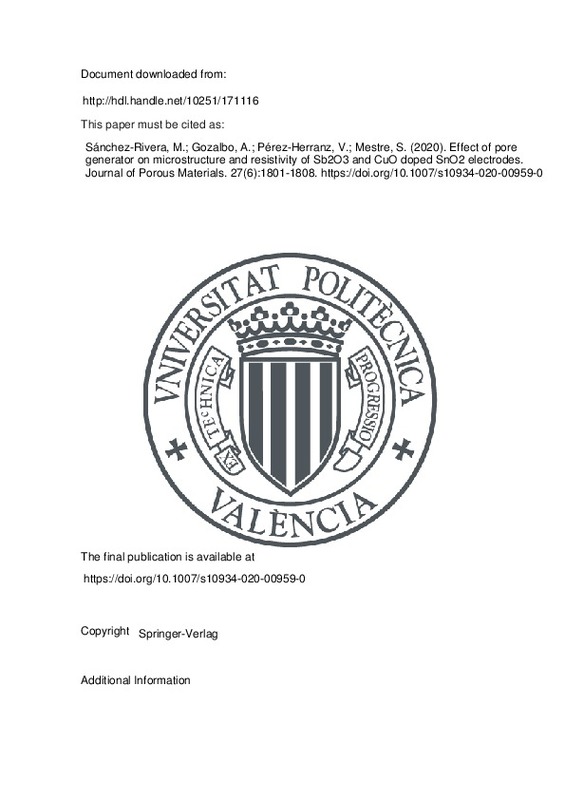C.A. Martínez-Huitle, S. Ferro, Electrochemical oxidation of organic pollutants for the wastewater treatment: direct and indirect processes. Chem. Soc. Rev. 35, 1324–1340 (2006). https://doi.org/10.1039/B517632H
C.A. Kent, J.J. Concepcion, C.J. Dares, D.A. Torelli, A.J. Rieth, A.S. Miller, P.G. Hoertz, T.J. Meyer, Water oxidation and oxygen monitoring by cobalt-modified fluorine-doped tin oxide electrodes. J. Am. Chem. Soc. 135, 8432–8435 (2013). https://doi.org/10.1021/ja400616a
M.P. Miranda, R. Del Rio, M.A. Del Valle, M. Faundez, F. Armijo, Use of fluorine-doped tin oxide electrodes for lipoic acid determination in dietary supplements. J. Electroanal. Chem. 668, 1–6 (2012). https://doi.org/10.1016/j.jelechem.2011.12.022
[+]
C.A. Martínez-Huitle, S. Ferro, Electrochemical oxidation of organic pollutants for the wastewater treatment: direct and indirect processes. Chem. Soc. Rev. 35, 1324–1340 (2006). https://doi.org/10.1039/B517632H
C.A. Kent, J.J. Concepcion, C.J. Dares, D.A. Torelli, A.J. Rieth, A.S. Miller, P.G. Hoertz, T.J. Meyer, Water oxidation and oxygen monitoring by cobalt-modified fluorine-doped tin oxide electrodes. J. Am. Chem. Soc. 135, 8432–8435 (2013). https://doi.org/10.1021/ja400616a
M.P. Miranda, R. Del Rio, M.A. Del Valle, M. Faundez, F. Armijo, Use of fluorine-doped tin oxide electrodes for lipoic acid determination in dietary supplements. J. Electroanal. Chem. 668, 1–6 (2012). https://doi.org/10.1016/j.jelechem.2011.12.022
M.A.Q. Alfaro, S. Ferro, C.A. Martínez-Huitle, Y.M. Vong, Boron doped diamond electrode for the wastewater treatment. J. Braz. Chem. Soc. 17, 227–236 (2006). https://doi.org/10.1590/S0103-50532006000200003
J. Mora-Gómez, M. García-Gabaldón, E. Ortega, M.-J. Sánchez-Rivera, S. Mestre, V. Pérez-Herranz, Evaluation of new ceramic electrodes based on Sb-doped SnO2 for the removal of emerging compounds present in wastewater. Ceram. Int. 44, 2216–2222 (2018). https://doi.org/10.1016/j.ceramint.2017.10.178
C.J. Evans, Industrial uses of tin chemicals, Chem. Tin, Springer Netherlands, Dordrecht, 1998: pp. 442–479. https://doi.org/10.1007/978-94-011-4938-9_12
J. Molera, T. Pradell, N. Salvadó, M. Vendrell-Saz, Evidence of tin oxide recrystallization in opacified lead glazes. J. Am. Ceram. Soc. 82, 2871–2875 (2004). https://doi.org/10.1111/j.1151-2916.1999.tb02170.x
P.P. Tsai, I.-C. Chen, M.H. Tzeng, Tin oxide (SnOX) carbon monoxide sensor fabricated by thick-film methods. Sensors Actuators B 25, 537–539 (1995). https://doi.org/10.1016/0925-4005(95)85116-X
F. Li, J. Xu, X. Yu, L. Chen, J. Zhu, Z. Yang, X. Xin, One-step solid-state reaction synthesis and gas sensing property of tin oxide nanoparticles. Sensors Actuators B 165–169. http://www.sciencedirect.com/science/article/pii/S0925400501009479
S. Zuca, M. Terzi, M. Zaharescu, K. Matiasovsky, Contribution to the study of SnO2-based ceramics. J. Mater. Sci. 26, 1673–1676 (1991). https://doi.org/10.1007/BF00544681
M. BATZILL, U. DIEBOLD, The surface and materials science of tin oxide. Prog. Surf. Sci. 79, 47–154 (2005). https://doi.org/10.1016/j.progsurf.2005.09.002
G. Monrós. El color de la cerámica: nuevos mecanismos en pigmentos para los nuevos procesados de la industria cerámica, n.d. https://books.google.es/books/about/El_Color_de_la_cerámica.html?id=yfIogcGvdqUC&redir_esc=y . Accessed 29 Aug 2018
E.R. Leite, J.A. Cerri, E. Longo, J.A. Varela, C.A. Paskocima, Sintering of ultrafine undoped SnO2 powder. J. Eur. Ceram. Soc. 21, 669–675 (2001). https://doi.org/10.1016/S0955-2219(00)00250-8
S. Mihaiu, O. Scarlat, G. Aldica, M. Zaharescu, SnO2 electroceramics with various additives. J. Eur. Ceram. Soc. 21, 1801–1804 (2001). https://doi.org/10.1016/S0955-2219(01)00119-4
C.R. Foschini, L. Perazolli, J.A. Varela, Sintering of tin oxide using zinc oxide as a densification aid. J. Mater. Sci. 39, 5825–5830 (2004). https://doi.org/10.1023/B:JMSC.0000040095.03906.61
M.S. Castro, C.M. Aldao, Characterization of SnO2-varistors with different additives. J. Eur. Ceram. Soc. 18, 2233–2239 (1998). https://doi.org/10.1016/S0955-2219(97)00130-1
A.-M. Popescu, S. Mihaiu, S. Zuca, Microstructure and electrochemical behaviour of some SnO2-based inert electrodes in aluminium electrolysis. Zeitschrift Für Naturforsch. A 57, 71–75 (2002). https://doi.org/10.1515/zna-2002-1-210
M.R. Sahar, M. Hasbullah, Properties of SnO2-based ceramics. 30, 5304–5305 (1995)
D. Nisiro, G. Fabbri, G.C. Celotti, A. Bellosi, Influence of the additives and processing conditions on the characteristics of dense SnO2-based ceramics. J. Mater. Sci. 38, 2727–2742 (2003). https://doi.org/10.1023/A:1024459307992
M.-J. Sánchez-Rivera, CuO improved (Sn,Sb)O2 ceramic anodes for electrochemical advanced oxidation processes. Int. J. Appl. Ceram. Technol. (2018)
B. Das, B. Chakrabarty, P. Barkakati, Preparation and characterization of novel ceramic membranes for micro-filtration applications. Ceram. Int. 42, 14326–14333 (2016). https://doi.org/10.1016/j.ceramint.2016.06.125
I. Hedfi, N. Hamdi, M.A. Rodriguez, E. Srasra, Development of a low cost micro-porous ceramic membrane from kaolin and Alumina, using the lignite as porogen agent. Ceram. Int. 42, 5089–5093 (2016). https://doi.org/10.1016/j.ceramint.2015.12.023
M. García-Gabaldón, V. Pérez-Herranz, E. Sánchez, S. Mestre, Effect of porosity on the effective electrical conductivity of different ceramic membranes used as separators in eletrochemical reactors. J. Memb. Sci. 280, 536–544 (2006). https://doi.org/10.1016/j.memsci.2006.02.007
J.-H. Kim, K.-H. Lee, Effect of PEG additive on membrane formation by phase inversion. J. Memb. Sci. 138, 153–163 (1998). https://doi.org/10.1016/S0376-7388(97)00224-X
B.K. Nandi, R. Uppaluri, M.K. Purkait, Preparation and characterization of low cost ceramic membranes for micro-filtration applications. Appl. Clay Sci. 42, 102–110 (2008). https://doi.org/10.1016/j.clay.2007.12.001
F. Bouzerara, A. Harabi, S. Condom, Porous ceramic membranes prepared from kaolin. Desalin. Water Treat. 12, 415–419 (2009). https://doi.org/10.5004/dwt.2009.1051
Q. Guibao, L. Tengfei, W. Jian, B. Chenguang, Preparation Titanium Foams with Uniform and Fine Pore Characteristics Through Powder Route Using Urea Particles as Space Holder (Springer, Cham, 2018), pp. 861–868. https://doi.org/10.1007/978-3-319-72526-0_82
K. Zou, Y. Deng, J. Chen, Y. Qian, Y. Yang, Y. Li, G. Chen, Hierarchically porous nitrogen-doped carbon derived from the activation of agriculture waste by potassium hydroxide and urea for high-performance supercapacitors. J. Power Sources. 378, 579–588 (2018). https://doi.org/10.1016/j.jpowsour.2017.12.081
S. Vijayan, R. Narasimman, K. Prabhakaran, A urea crystal templating method for the preparation of porous alumina ceramics with the aligned pores. J. Eur. Ceram. Soc. 33, 1929–1934 (2013). https://doi.org/10.1016/j.jeurceramsoc.2013.02.031
R.M. German, Sintering Theory and Practice (Wiley, New York, 1996)
G.E. Archie, The electrical resistivity log as an aid in determining some reservoir characteristics. Trans. AIME. 146, 54–62 (1942)
P. WAGNER, J.A. O’ROURKE, P.E. ARMSTRONG, Porosity effects in polycrystalline graphite. J. Am. Ceram. Soc. 55, 214–219 (1972). https://doi.org/10.1111/j.1151-2916.1972.tb11262.x
H.El Khal, A. Cordier, N. Batis, E. Siebert, S. Georges, M.C. Steil, Effect of porosity on the electrical conductivity of LAMOX materials. Solid State Ionics. 304, 75–84 (2017). https://doi.org/10.1016/j.ssi.2017.03.028
S. Tian-Ming, D. Li-Min, W. Chen, G. Wen-Li, W. Li, T.-X. Liang, New carbon materials Effect of porosity on the electrical resistivity of carbon materials. New Carbon Mater 28, 349–354 (2013). https://doi.org/10.1016/S1872-5805(13)60087-6
W. Pabst, E. Gregorová, Conductivity of porous materials with spheroidal pores. J. Eur. Ceram. Soc. 34, 2757–2766 (2014). https://doi.org/10.1016/j.jeurceramsoc.2013.12.040
[-]







![[Cerrado]](/themes/UPV/images/candado.png)


